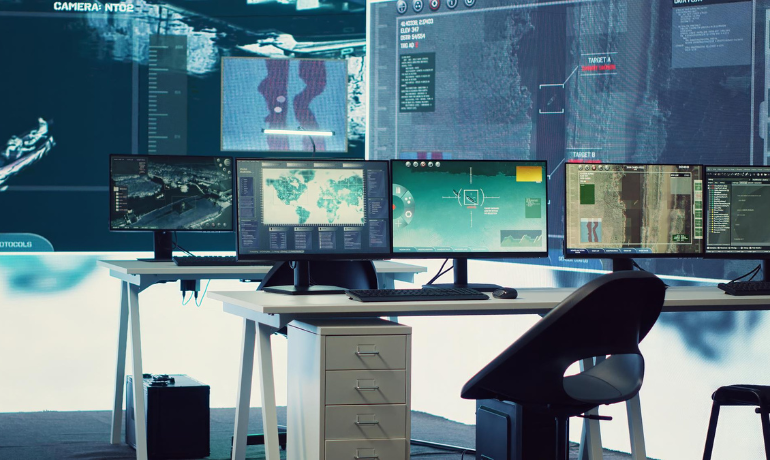In times of crisis, the efficiency and effectiveness of emergency response can mean the difference between life and death. Emergency Operations Centers (EOCs) play a pivotal role in managing responses to natural disasters, public health emergencies, and other crises. At the heart of every EOC is its control room, a hub of coordination, communication, and decision-making. This blog explores why control rooms are essential in EOCs and how they enhance emergency operations.
Centralized Command and Control
One of the primary functions of a control room in an EOC is to serve as a centralized command and control center. This centralized approach allows for:
1. Unified Decision-Making:
Control rooms enable a unified approach to decision-making, where information from various sources is collected, analyzed, and acted upon in real-time. This ensures that all stakeholders are on the same page and that decisions are made based on the most current and accurate data.
2. Efficient Resource Allocation:
During emergencies, resources such as personnel, equipment, and supplies must be allocated swiftly and efficiently. Control rooms facilitate this by providing a comprehensive overview of available resources and their deployment status, allowing for optimal allocation.
Enhanced Communication and Coordination
Effective communication and coordination are critical during emergencies. Control rooms in EOCs enhance these aspects through:
1. Real-time Information Sharing:
Control rooms are equipped with advanced communication systems that enable real-time information sharing among emergency responders, government agencies, and other relevant parties. This ensures that everyone involved has access to the latest updates and can respond accordingly.
2. Integrated Communication Platforms:
Modern control rooms integrate various communication platforms, including radio, telephone, video conferencing, and digital messaging. This integration allows for seamless communication across different channels, reducing the chances of miscommunication and delays.
Situational Awareness and Monitoring
Control rooms in EOCs provide a high level of situational awareness and monitoring, which is crucial for effective emergency management. Key features include:
1. Comprehensive Data Visualization:
Control rooms use advanced visualization tools to present data from multiple sources in an easily understandable format. This includes maps, graphs, and dashboards that provide a clear picture of the situation on the ground.
2. Continuous Monitoring:
Control rooms are equipped with monitoring systems that continuously track the progress of the emergency and the effectiveness of response efforts. This continuous monitoring allows for timely adjustments and improvements to response strategies.
Decision Support and Analysis
Making informed decisions during an emergency is critical to successful outcomes. Control rooms provide robust decision support and analysis capabilities through:
1. Data Analytics:
Control rooms use data analytics to analyze large volumes of data quickly and accurately. This helps identify trends, predict potential issues, and evaluate the effectiveness of response measures.
2. Scenario Planning:
Control rooms facilitate scenario planning and simulations, allowing emergency responders to anticipate different outcomes and prepare for various contingencies. This proactive approach enhances readiness and reduces the impact of unforeseen events.
Ensuring Public Safety and Recovery
The ultimate goal of EOCs and their control rooms is to ensure public safety and facilitate recovery. This is achieved by:
1. Swift Response:
Control rooms enable a swift and coordinated response to emergencies, minimizing the impact on affected communities and saving lives.
2. Effective Recovery Planning:
Control rooms play a crucial role in planning and coordinating recovery efforts. By analyzing data and assessing damage, they help develop comprehensive recovery plans that address the needs of the community and restore normalcy as quickly as possible.
Conclusion
Control rooms are the nerve centers of Emergency Operations Centers, providing the necessary infrastructure for efficient emergency response, coordination, and management. Their role in enhancing communication, situational awareness, decision-making, and public safety is invaluable. As technology continues to advance, control rooms will become even more sophisticated, further improving our ability to respond to and recover from emergencies. Investing in modern, well-equipped control rooms is essential for any community, organization, or government agency dedicated to protecting lives and ensuring resilience in the face of crises.

